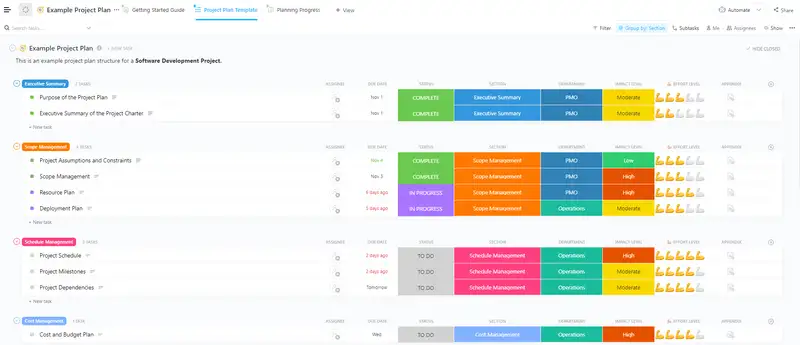

With the help of this practical Cyber Security Project Plan Template, you can efficiently handle your tasks and set up an effective cyber security procedure.
Ensuring the security of your organization's systems and data is an important part of any business. Following the steps outlined below when creating a cyber security project plan with ClickUp can help ensure that you have secure processes in place and can proactively respond to threats.
Identify the goals for your cyber security project plan, such as upgrading infrastructure or creating a system to detect and respond to threats. Brainstorm ideas for what needs to be done and use a Doc in ClickUp to document these objectives.
Assess any existing risks within your organization's systems, such as malware or malicious actors, as well as potential areas of vulnerability that need attention. Create tasks in ClickUp to track these risks throughout the project process.
Create an actionable strategy based on your assessment of risks, which should include goals, timelines, resources needed, and specific tasks that need to be completed in order to properly secure your organization's systems and data.
Once you have designed a strategy for addressing cyber security risks, allot the necessary resources (e.g., personnel or hardware) and assign tasks across team members in ClickUp so everyone knows their role in the project process.
Regularly monitor progress against set objectives by tracking tasks across each member of the team so you can identify any issues or delays quickly and make adjustments where needed before they become major problems down the line. Use Dashboards in ClickUp to easily see who’s working on what at any given time.
Test out solutions once they are implemented or improved upon using automated testing tools. Create recurring tasks in ClickUp that trigger whenever new implementations are completed.
Once tests have been conducted, review results. Use custom fields in ClickUp to track key metrics like total number of threats detected, latency times etc. This will help inform future decisions around cyber security initiatives.